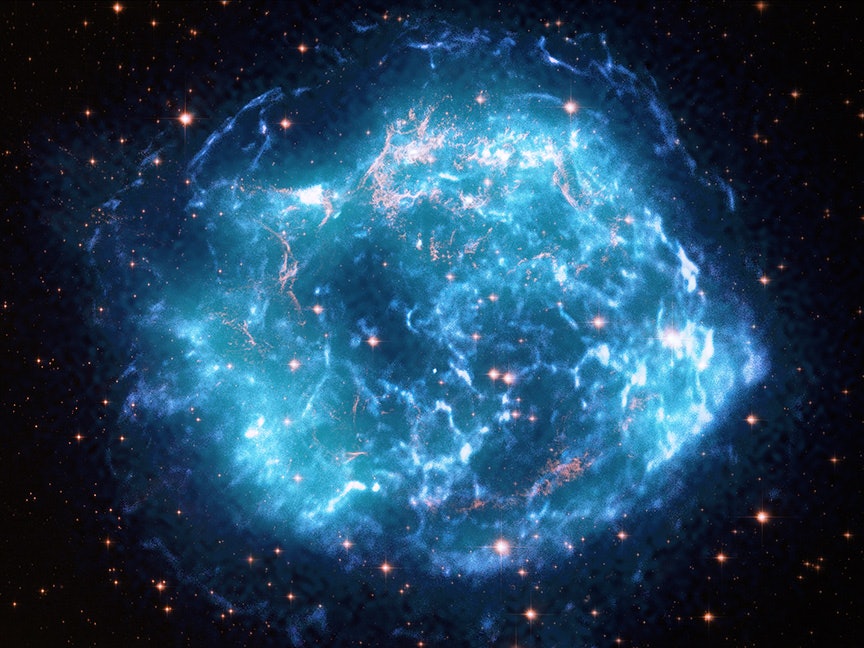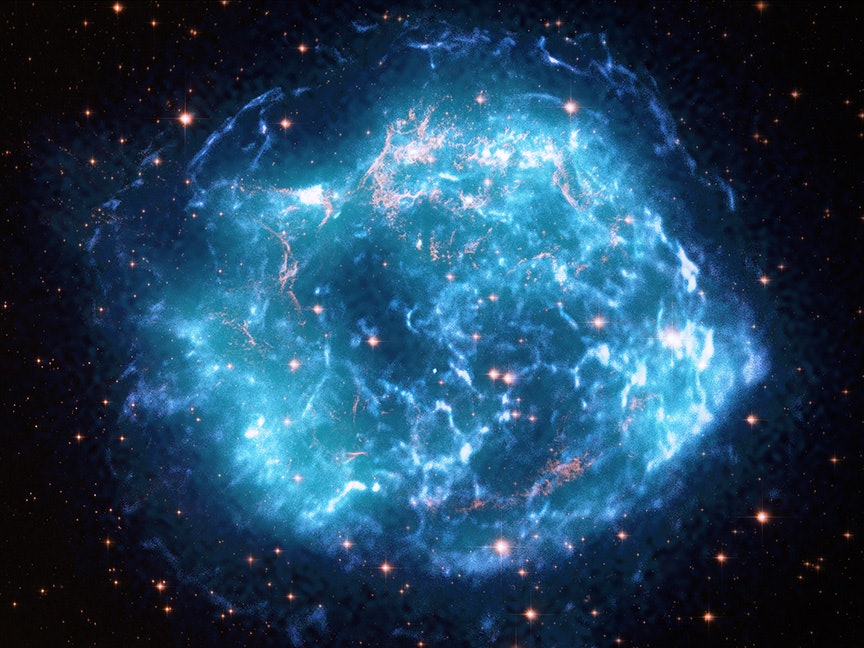
Roughly 300 years ago, light from a supernova first appeared in Earth’s skies and formed the brilliant object Cassiopeia A. That blast emitted powerful shockwaves packed with clues about how a star unraveled.
IXPE, or Imaging X-ray Polarimetry Explorer, is a new two-year, $188 million mission that seeks to unpack the eccentric mechanics of chaos. New data from the long-shaped spacecraft could help explain what occurred 11,000 light-years away from Earth to create the prominent spherical shape of Cassiopeia A.
From its perch 370 miles above Earth’s equator, IXPE studies categorically-turbulent regions like supermassive black holes, pulsars, and supernovas. Cassiopeia A fits the bill, boasting what NASA describes as “some of the fastest-moving shock waves of any known supernova remnant.”
Its dramatics garnered it priority on IXPE’s list of observational targets. And now, NASA has announced that astronomers have measured and mapped a particular emission from the supernova for the first time. It is a follow-up from Valentine’s Day 2022, when the IXPE mission published its first science image of the same supernova.

The neon and turquoise blues of the above image are not visible to the human eye; the golden filaments seen throughout the orb are what the optical instruments of the Hubble Space Telescope have observed.
IXPE’s sensitivity to polarized X-ray light, which is invisible, has revealed information that astronomers did not have before. But now astronomers can better understand the debris field because the polarized X-ray data reveals clearer details about the supernova’s magnetic fields.
Magnetic fields are also invisible, but they can guide the debris of the star blast. Sometimes they push particles outwards to near-light speed, NASA says, or they can trap the material and force it to spiral around.
And astronomers want to get a sharper understanding of a supernova’s sequence of events. Supernovas, like the 10-light-year-wide Cassiopeia A, are the “primary means for seeding the galaxy” with elements essential for planets and life, such as carbon, nitrogen, oxygen, silicon, and iron.
“As the first target of the IXPE observation campaign, Cas[siopeia] A provided an astrophysical 'laboratory' to test all the techniques and analysis tools that the team has developed in recent years,” says researcher Riccardo Ferrazzoli in the IXPE Cassiopeia announcement.
IXPE is a collaboration between NASA and the Italian Space Agency (ASI) and launched at the end of last year atop a SpaceX Falcon 9 rocket from NASA’s Kennedy Space Center in Cape Canaveral, Florida. IXPE published its first image just two months later following a months-long commissioning phase.







